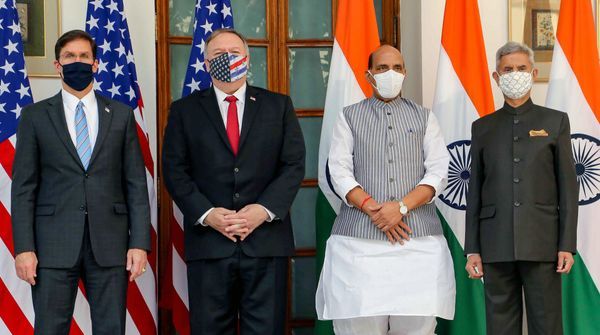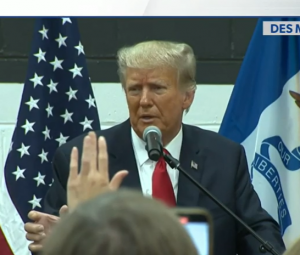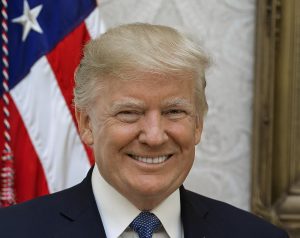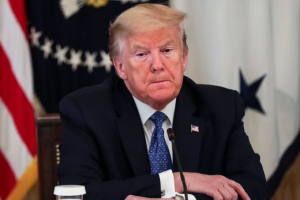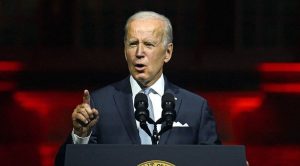The on-going India-China standoff at the LAC is undoubtedly being seen across the globe as a great opportunity by manufacturers of weapons and other items which India needs to acquire at such a difficult time. The recent 2+2 dialogue is an outstanding example of how Donald Trump tried to utilise it for his own re-election agenda.
In this regard, a report about the dialogue in the widely circulated American daily ‘US News’ deserves attention. It categorically stated that during the recent 2+2 dialogue, Mike Pompeo and Mark Esper had tried to push India to purchase MQ-9 Reaper drones, and that this was part of Trump’s strategy related to his re-election bid.
Also Read: The Modi-Biden telephone call
The US News report stated: “Multiple current officials speaking on the condition of anonymity confirm that the sale was at the top of the agenda for Secretary of State Mike Pompeo and Secretary of Defence Mark Esper going into their trip to India”.
The timing of the 2+2 dialogue was itself an indication that there was more to it than meets the eye. It took place just a week before the US Presidential election on November 3. The fact that Trump dispatched two of the most important members of his Administration all the way to India when he was totally engrossed in his re-election campaign left no one in doubt that the two were interconnected.
Amidst all the din about the US standing alongside India to ward off the Chinese threat, there was an unmistakable sales pitch that was clear as daylight. From the beginning, Trump had made arms sales a central component of his foreign policy. Early in his term, he had speeded up the process for arms sales abroad by reducing oversight, thus prompting widespread concern.
On 26 April 2019, he told the powerful National Rifle Association (NRA) that he was pulling the United States out of an international arms trade treaty; this treaty had been opposed by the NRA and other conservative groups.
It may be mentioned that the international arms trade agreement, signed by Barack Obama in 2013, aims to regulate the sale of weapons between countries. The US National Rifle Association says the treaty amounts to international gun control and is a threat to America’s second amendment right to bear arms.
Also Read: A tribute to our Galwan Bravehearts
Thus, Trump withdrew from this international weapons pact that had previously supported efforts to limit the spread of arms globally, saying it undermined American sovereignty. Then, in May 2019, Trump said that “over a million” American jobs were created by billions of dollars’ worth of new arms sales to Saudi Arabia which he pushed through despite concerns about the latter’s human rights record. Media reports suggested that the number of new jobs was likely to be between 20,000 and 40,000.
In this background, one cannot fail to observe how the Trump Administration was trying to achieve some of his goals through the sale of the 30 MQ-9 Reaper drones to India at a cost of $3 billion. Firstly, it would enable him to boast on the eve of his election that he had made another lucrative deal for America. Secondly, it would fulfil Trump’s objective of using the India-China standoff to pursue his goal of containing China.
Thirdly, the deal would also serve as a step towards incorporating more American hardware into India’s arsenal and moving it away from the Russian equipment that currently makes up much of it; this has been a key goal of the US as it continues to push for a closer alliance with India.
Karl Kaltenthaler, a professor at the University of Akron who is a well-known security and defence analyst explained Trump’s objectives thus: “For a customer like India, we get a strategic bang for our buck and at the same time we get the economic benefits,” adding, ” “This is a good story in that we’re keeping American jobs, we’re sticking it to China.”
As part of its sales pitch, the US side pushed the argument that the drones would perform a critical role in better preparing India’s army for the border tension with China that has escalated in recent months. On the other hand, India declined the MQ-9 offer, not only because of the high per unit cost but also because of the drone%u2019s limited utility in the context of the current India %u2013 China stand-off in Ladakh.
Also Read: US presidential elections 2020: Will a Biden victory adversely impact India?
It is also understood that India took the position that it would go for a more comprehensive arms package sometime in the future. Of course, this was not what Trump was looking for. He wanted India to sign the deal for purchasing the drones during the 2+2 meeting itself, which he could then suitably used before Election Day.
With India’s refusal to sign the deal, the Trump Administration had little choice but to hide its disappointment by appearing to take a futuristic view. As Defence Secretary Mark Esper indicated in public remarks, ‘the prospect of drone sales in the future, as well as other military equipment, remains a likelihood’.
Given the importance of drones in warfare, there is every likelihood that India could go in for substantial purchases of this military hardware, but whether it will procure them from the US or from some other source remains to be seen. For the time being, in view of the present resource crunch, India might take the route of upgrading the drones which it already possesses.
India did well by not allowing itself during the 2+2 dialogue to be pressurised and pushed into signing an agreement for the purchase of the MQ-9 Reaper drones at a cost which was clearly inflated. In any case, Trump failed to achieve the objective of obtaining political mileage for himself.
His bid to get re-elected has also failed, and in his own style, US voters have told him: “You’re fired”. It remains to be seen what approach the new Biden Administration will adopt towards arms sales, including those to India.
#IndiaUSties #DonaldTrump #MarkEsper #MikePompeo #SJaishankar #RajnathSingh

